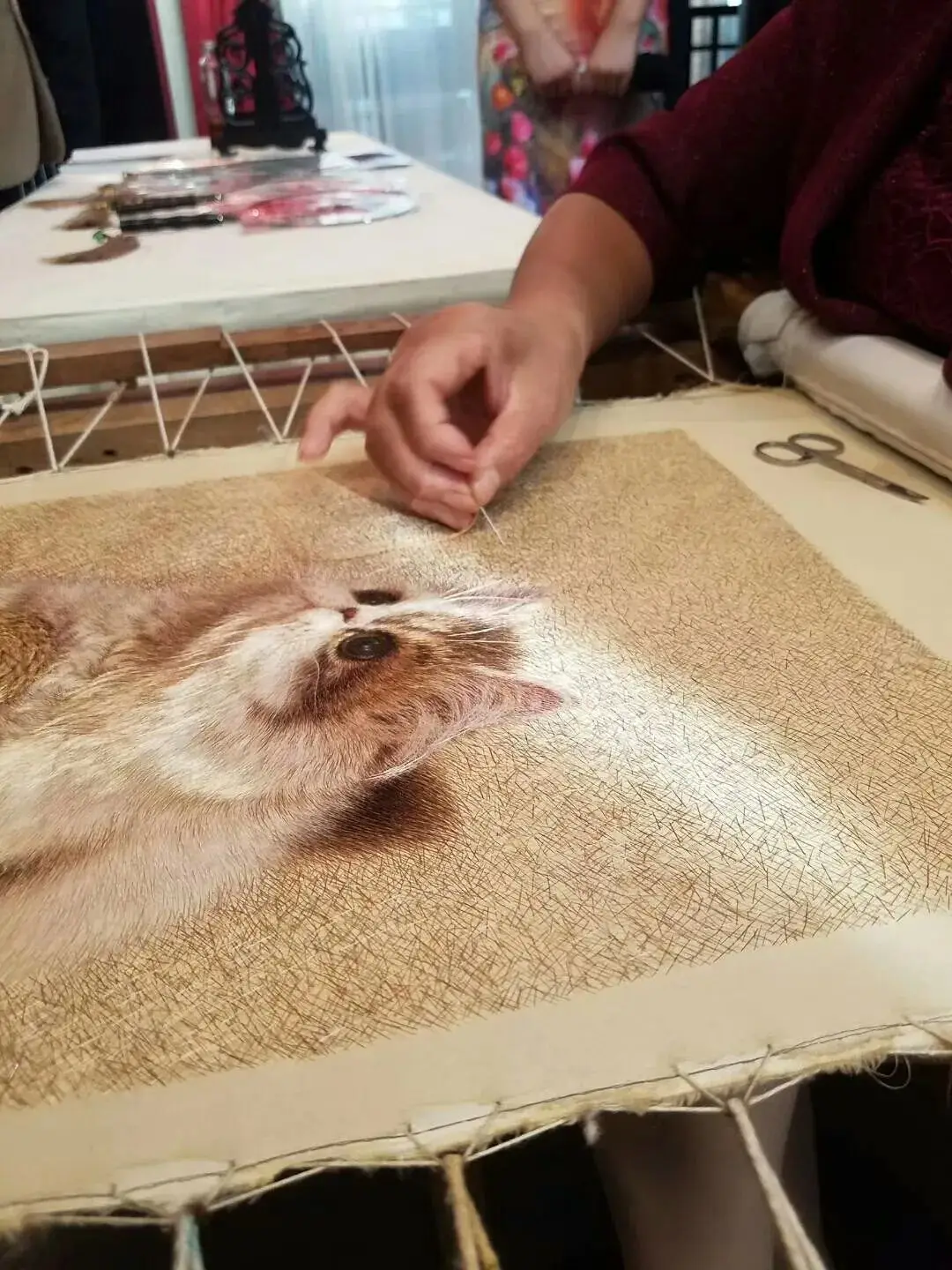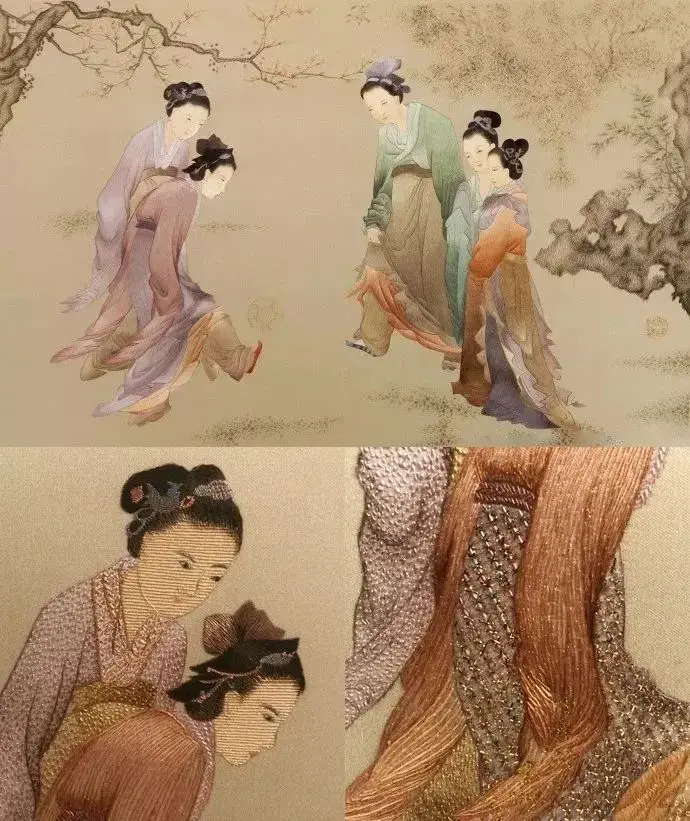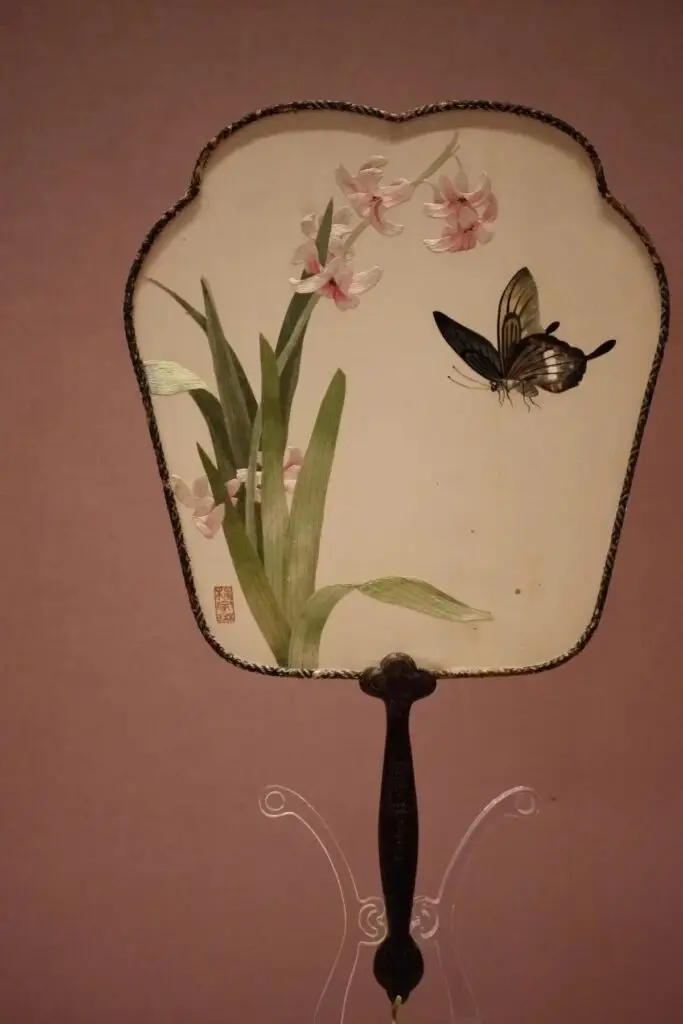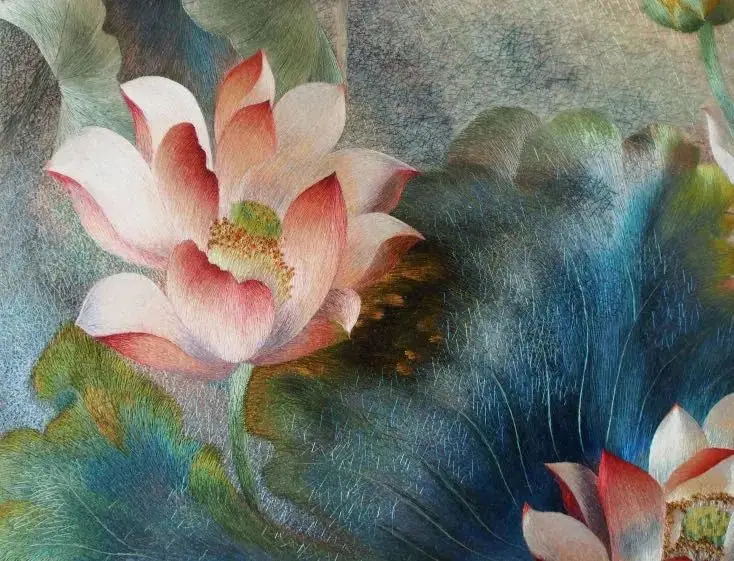
A wonderful journey of Chinese embroidery

A wonderful journey of Chinese embroidery
Chinese embroidery, you deserve it
Chinese embroidery, you deserve it

The development journey of Su embroidery
Suzhou embroidery, which began in the Three Kingdoms period, developed in the Sui and Tang dynasties, and the Qing Dynasty was the heyday of Suzhou embroidery.In the Qing Dynasty, Suzhou embroidery became an industry, and commercial embroidery was extremely developed, so Suzhou was known as the “embroidery market”. The Qing Dynasty established “Suzhou embroidery, Hunan embroidery, Guangdong embroidery, and Shu embroidery” as China’s four famous embroideries, and Suzhou embroidery became the first of the four famous embroideries.
According to the records of Liu Xiang of the Western Han Dynasty, as early as the Spring and Autumn Period more than 2,000 years ago, Wu State had used Su embroidery for clothing. The delicate nine dragons on the dragon robe of the ancient emperors were embroidered using Suzhou embroidery techniques, and Suzhou embroidery became the embroidery of the emperor.
In the Ming Dynasty, in terms of painting art, the Wumen school represented by Tang Yin (Tang Bohu) and Shen Zhou appeared, which promoted its development. The artist combines the painting works for reproduction, and the embroidered masterpieces are lifelike, and the charm of pen and ink is incisive, and it is known as “painting with a needle” and “ingenious workmanship”.

In the Qing Dynasty, there were many Suzhou embroidery needles, and the application was wide, no more than the previous dynasty, landscapes, pavilions, flowers and birds, people, omnipotent, omnipotent, all-encompassing. Coupled with the large needs of the court, luxurious and rich embroidery emerged in endlessly.
Suzhou embroidery later absorbed Shanghai’s “Gu embroidery” (also known as “painting embroidery”), combining “painting” with “embroidery”, using needles as a substitute for writing, thread as a fool, copying and embroidering ancient famous paintings, deliberately pursuing pen and ink interest, rich in a strong elegant style of Chinese painting.Suzhou embroidery has experienced many generations of innovation and development, each with its own characteristics, and all have a high degree of achievement.

Understanding Suzhou embroidery stitches
Suzhou embroidery has a unique style with beautiful patterns, ingenious ideas, meticulous embroidery, lively stitching, and elegant colors, and strong local characteristics. Embroidery skills have the characteristics of “flat, qi, harmonious, light, smooth and even”.
Suzhou embroidery is rich in color, Suzhou embroidery artists usually use three or four different colors of the same color line or adjacent colors to match, embroider the color effect of blending freely, a fine product uses hundreds or even thousands of thread colors.
The materials and tools required for embroidery mainly include flower bandages, embroidery stands, scissors, needles, cloth, thread, etc. In the embroidery skills, the stitches of Suzhou embroidery are extremely rich, and there are as many as 43 kinds of stitches in 9 categories.
In terms of types, Suzhou embroidery works can be mainly divided into three categories: zero cuts, costumes, and hanging screens, which are both decorative and practical. Suzhou embroidery can be divided into two categories: single-sided embroidery and double-sided embroidery. Suzhou embroidery stitch is divided into two categories: chaotic needle embroidery and flat embroidery.
Among them, the “double-sided embroidery” works are the most exquisite.

Due to the complexity of the process of Suzhou embroidery, each process has different techniques, and a good embroidery often takes several years or even longer to complete, which also leads to fewer and fewer people who are willing to learn and master Suzhou embroidery techniques in contemporary fast-paced life. To unite intangible cultural heritage inheritors and promote intangible cultural heritage, it is necessary to attract more young people to participate in the protection and inheritance of intangible cultural heritage.